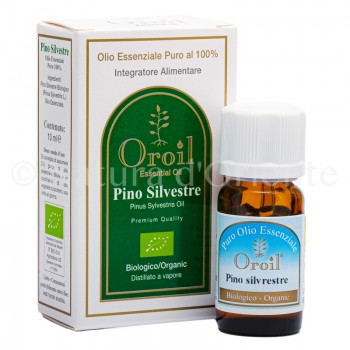Scots pine essential oil is an effective antiseptic and expectorant, useful for nose and throat disorders but also for those of the urinary tract.
The plant and the production of essential oil
Scots pine essential oil is obtained from an evergreen plant of the Pinaceae family whose scientific name is Pinus sylvestris. The plant is a tree that can reach 40 meters in height, the leaves are needle-like and gathered in bunches. The fruits are the cones (the well-known pine cones) from 3 to 7 cm long. The reddish bark and the small size of the pine cones are among the characteristics that distinguish it from other pine species. The plant has been known and appreciated for its properties since ancient times, it was already popular with the Assyrians. While in one of the many versions of the myth of Attis and Cybele of Greek mythology, in particular the one narrated by Ovid, Attis was transformed into a pine tree. Native Americans used it to keep insects out of their tents. The essential oil is obtained by steam distillation of the needles and pine cones.
Properties of Scots pine essential oil
The main properties recognized to pine essential oil are the antiseptic and expectorant properties (that is, by thinning the phlegm it favors its expulsion), another attributed property is the toning and energizing for which it is appreciated in aromatherapy. Finally, according to some, this invigorating ability would also be useful for problems in the sexual sphere.
Internal use of Scots pine essential oil
The main internal use of Scots pine essential oil pertains precisely to its antiseptic but also diuretic and anti-inflammatory properties: it is recommended as a remedy for cystitis and other urinary tract diseases. Other problems for which internal use is recommended are rheumatism and water retention. We will never stop remembering that for internal use in particular it is always advisable to consult with an expert, however as an indication the dose never exceeds two drops, they are usually taken in a teaspoon of honey.
External use of Scots pine essential oil
The adjuvant activity in the case of respiratory tract diseases is obtained through suffumigation: the classic basin of hot water with a few drops of Scots pine essential oil and a towel on the head for imprison the vapors released that will be inhaled. A truly external use is in aromatherapy, in this case it is a question of spreading it in the environment, various methods can be used, from the special burners for essential oils to the humidifying trays of the radiators, basically using one drop for each square meter of the environment. This use is indicated to take advantage of its invigorating and anti-stress properties. To get help in case of a stuffy nose, if you don't want to use fumigation, a middle ground is to leave a handkerchief soaked in a few drops on the pillow or on the nightstand near the bed at bedtime. Scots pine oil can also be used for massages, according to some sources it would have a soothing effect on aching muscles. In the case of application on the skin (of course not pure essential oil but a few drops of it in a carrier oil) be careful not to use it on irritated skin and for greater safety avoid it during pregnancy, warnings valid for all essential oils . Another possible use in addition to that of massages is the cosmetic one by adding it to the bubble bath, in this case to refresh and tone the skin thanks to the ability to reactivate microcirculation.



 No reward points for this product.
No reward points for this product.










